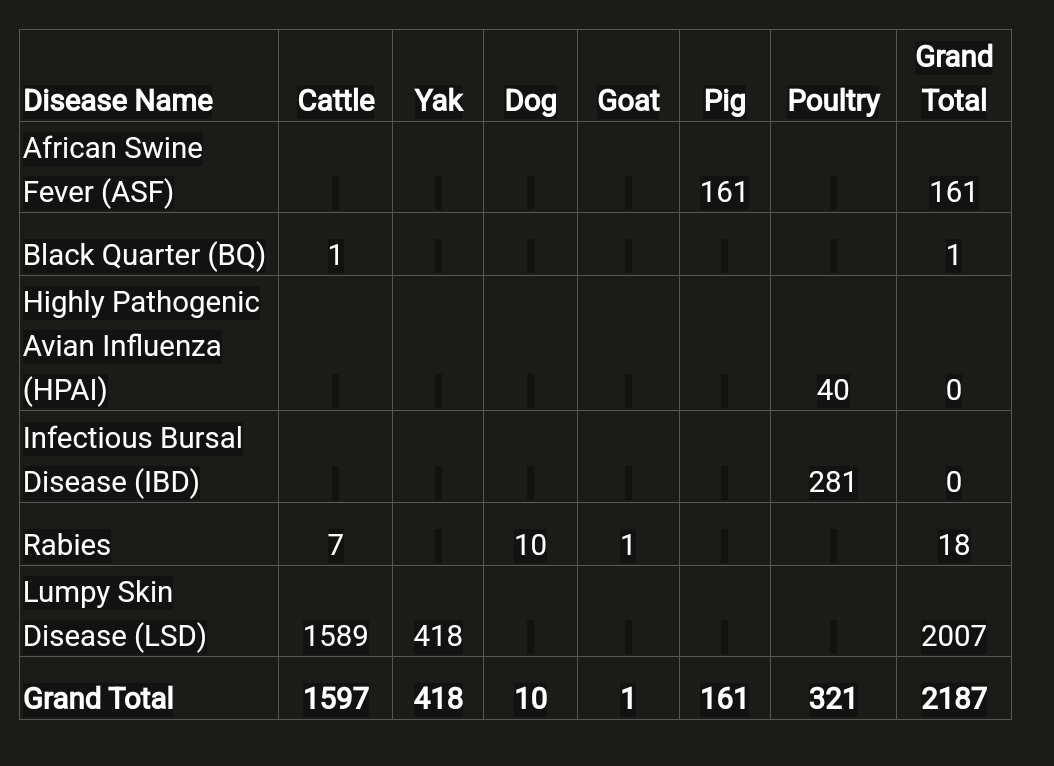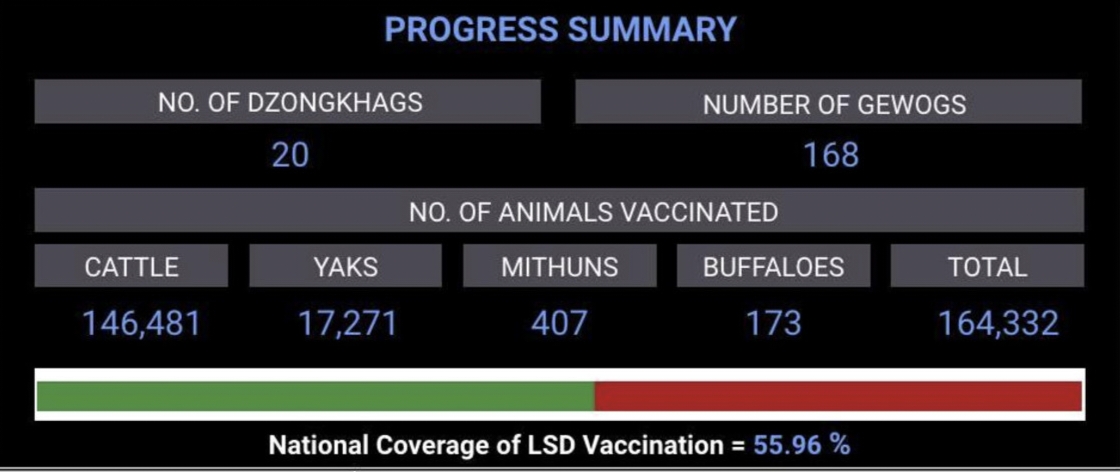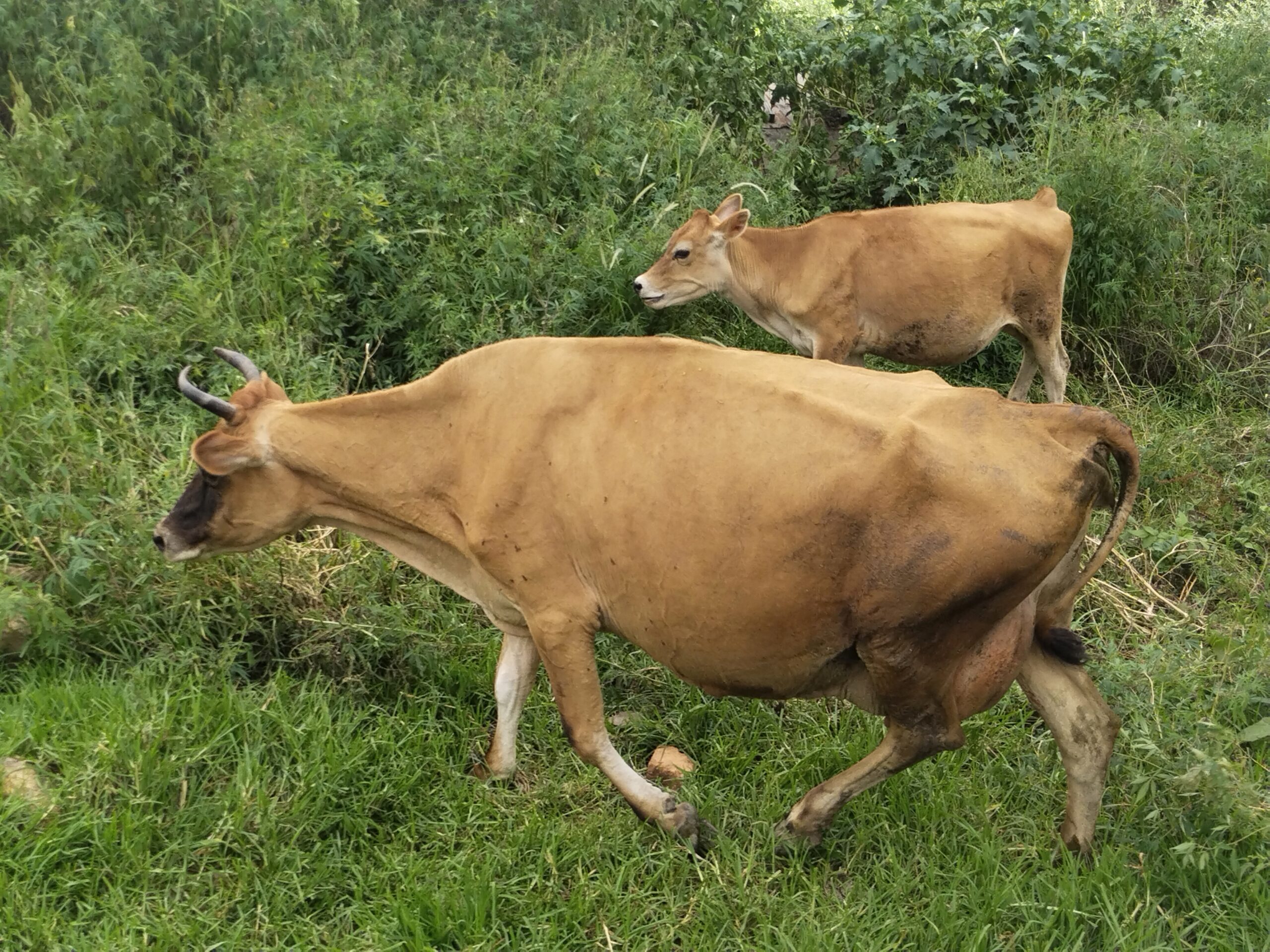… department facing severe vet shortage
YK Poudel
Bhutan recorded 2,187 bovine deaths in the past eight months this year incurring huge losses to farmers.
Between January and August, 1,597 cattle died: 1,589 with lumpy skin disease, seven with rabies, and 1 black quarter.
Lumpy skin disease also killed 418 yaks. Rabies killed 10 dogs and one goat. A total of 161 pigs died of African swine fever, and 321 poultry died from infectious bursal disease and highly pathogenic avian influenza (HPAI).

With fewer poultry farms in operation, egg shortages were reported in the country and triggered a hike in price.
Livestock deaths in Bhutan have seen a significant rise with 21,472 bovine and 232,758 other livestock fatalities reported last year. This is an increase of 1,742 deaths of bovine and a decrease of 681,554 for other livestock populations.
The livestock population forecasting by National Statistics Bureau (NSB), projects 342,719 cattle population by 2034—an increase of 87,822 numbers compared to 254,897 cattle in 2022.
The NSB’s 2022 Integrated Agriculture and Livestock Census (IALC) report recorded 51,892 farmers rearing livestock compared to 54,149 in 2021.
The farmers reported diseases, wildlife depredation deaths due to tiger and bear, and accidents as the top three causes that killed bovine livestock last year.
Other livestock mostly died from wildlife predation. Poultry also died due to lack of feed – birds pecking each other, birds slaughtered for meat, and birds being predated by domestic animals like dogs and cats.
Wangdue reported 17.4 percent mortality—the highest among dzongkhags, Trashigang had 11.9 percent and Samtse had 9.4 percent.
Farmers feel that the absence of any compensation and benefits has left them uninterested in rearing livestock.
Farmers, who rely on livestock as a source of income, said that the existing plan for compensation was ineffective.
Ministry officials previously told Kuensel that farmers had earlier received compensation and that the funds set for this purpose had run out, leaving the government unable to compensate farmers for the time being.
The livestock department assured that proactive steps and investments are made to ensure adequate livestock products within the country.

National Centre for Animal Health data shows that as of September 12— 164,332 animals including 146,481 cattle, 17,271 yaks, 407 mithuns and 173 buffaloes vaccinated against lumpy skin disease.
The vaccination coverage is 55.96 percent. Trashigang has the highest coverage followed by Wangdue.
Reports state that Bhutan imported food commodities almost five times the value of exports. The import of live animals, and animal commodities like meat, fish, and dairy produce shows an import value of more than ngultrum 956 million against the export value of around ngultrum 13 million.
According to the animal health centre, the unprecedented animal disease outbreaks are the result of various factors, such as inadequate manpower in the field due to the high attrition rate within the livestock sector.
“The shortage of manpower has led to increased pressure in service delivery, physical and mental exhaustion among the workers due to work overload and low vaccination coverage for disease outbreak prevention,” said an official.
The attrition rate of veterinarians has been a big concern for the department.
As per the ministry’s record, there are 609 health personnel—535 technical and 74 non-technical staff within dzongkhag and central programmes. However, a human resource gap of 75 personnel at various levels has existed despite measures to recruit senior officials who resigned.


